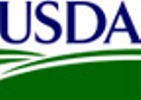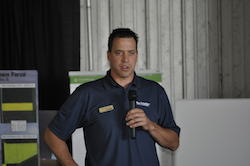More soybeans and less corn planted this year, according to the USDA planted acreage report released today.
 USDA’s National Agricultural Statistics Service (NASS) is estimating a record high 84.8 million acres of soybeans planted in the United States for 2014, up 11 percent from last year, while corn acreage planted is estimated at 91.6 million acres, down 4 percent from last year, representing the lowest planted acreage in the United States since 2010. However, it still represents the fifth-largest U.S. corn acreage planted since 1944.
USDA’s National Agricultural Statistics Service (NASS) is estimating a record high 84.8 million acres of soybeans planted in the United States for 2014, up 11 percent from last year, while corn acreage planted is estimated at 91.6 million acres, down 4 percent from last year, representing the lowest planted acreage in the United States since 2010. However, it still represents the fifth-largest U.S. corn acreage planted since 1944.
“In 2014, U.S. corn farmers are well on the way to again growing an abundant crop,” said National Corn Growers Association President Martin Barbre said. “While critical points in the season remain ahead of us, Americans can be confident that bountiful stockpiles and adequate plantings will ensure our corn security for the year to come.”
The largest acreage decreases were seen in North Dakota and Nebraska, where corn acreage decreased by 800,000 and 650,000 acres respectively. The largest increases in soybean acreage planted compared to 2013 are seen in Illinois, Iowa, Nebraska and Minnesota which are each expected to plant 600-850,000 more acres this year.
“This month’s report reinforces forecasts that the soybean market is in transition,” American Farm Bureau crops economist Todd Davis said. “The old-crop soybean market is managing tight stocks through higher prices while the market is waiting for a potential record-large new crop harvest.”
However, Davis is quick to caution that there is a long way to go before combines start rolling this fall and Mother Nature will have the final say.
“July is a critical time for corn production. Excessive heat stress or moisture stress can rob bushels, while August weather is crucial for soybean production,” Davis said.











